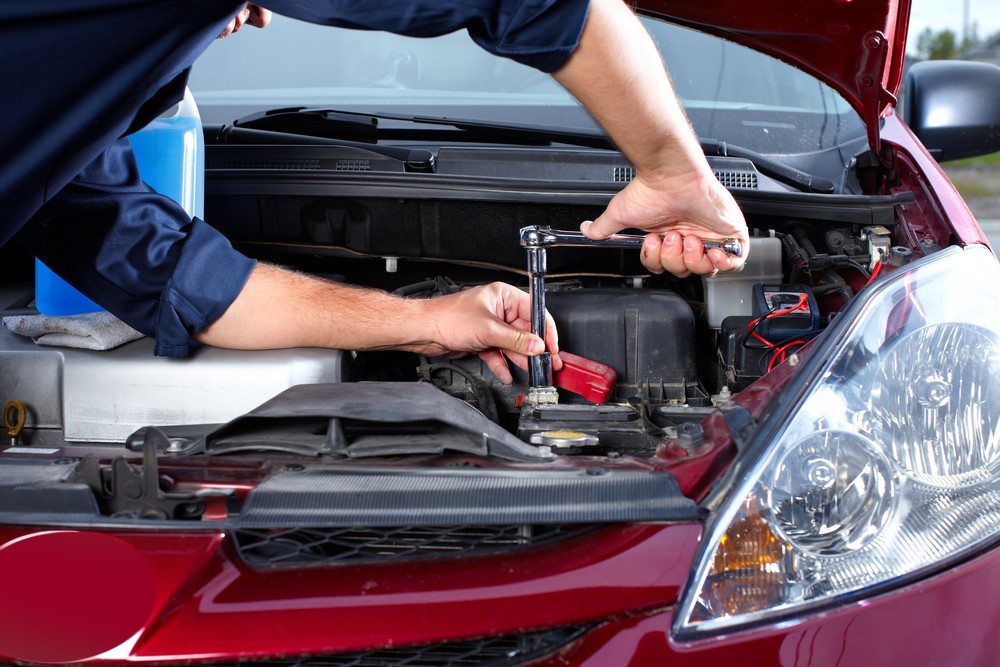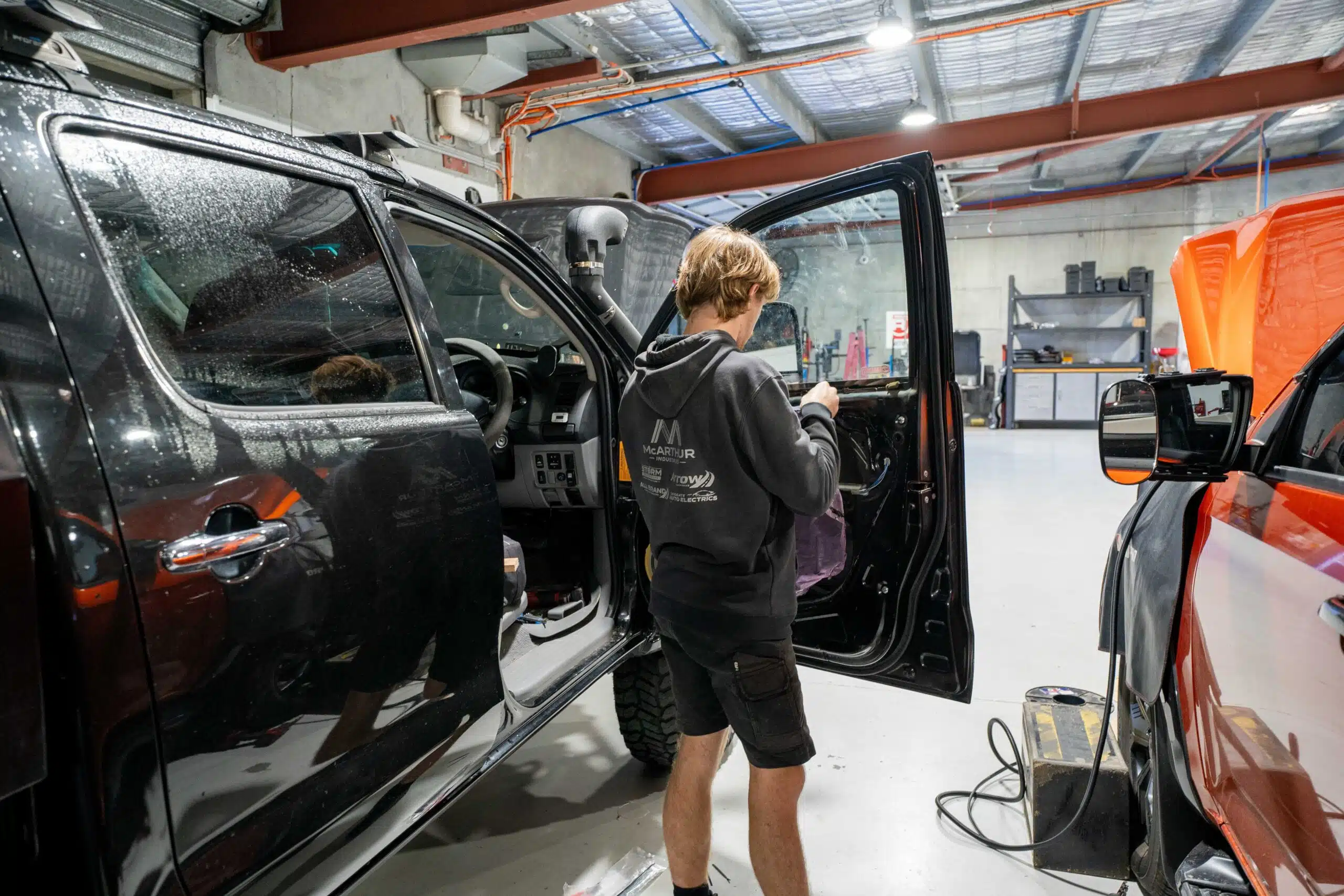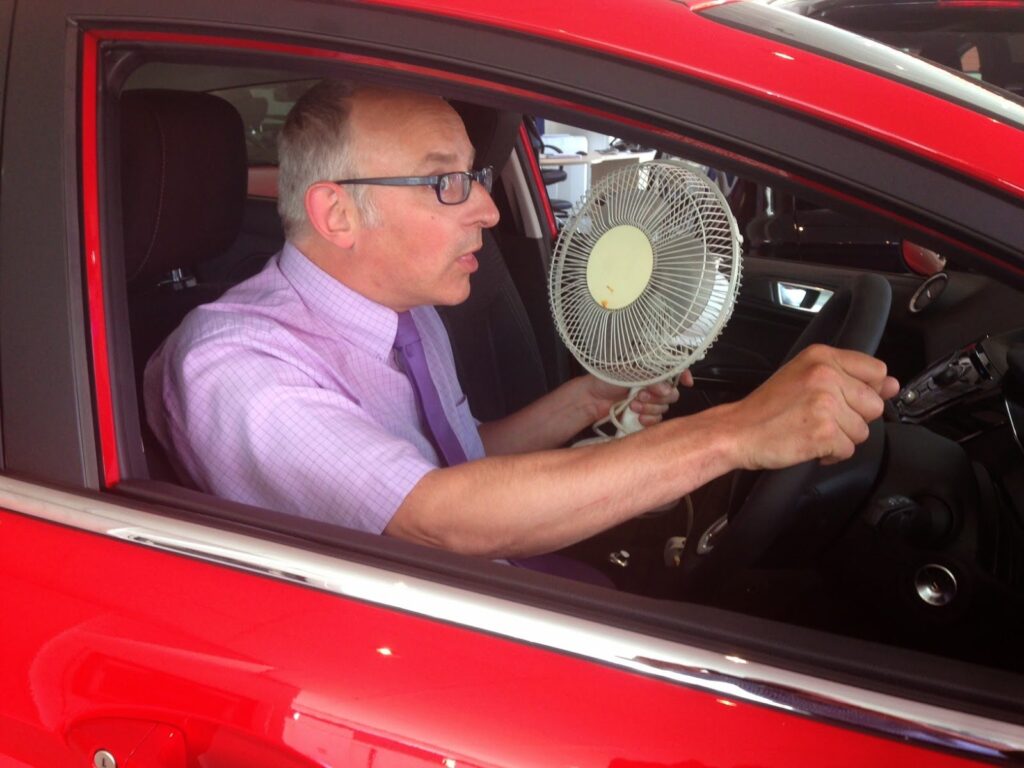An air conditioner that does not blow cold air is a serious problem. With the summer heat in Australia, you don’t want to go anywhere without turning on your car’s air conditioner. Most summer days in Brisbane can reach around 32 degrees and having a faulty air conditioner is not an option.
You might notice weird noises in your car, it might have taken a while for you to realise that it only happens when the A/C is turned on, but now you’re getting closer to the problem.
Fixing your air conditioning may just take a simple tweak, but unless you really know what you are looking at it can be quite complex.
If you really have no idea of what things are your best move would be to take the car in to a qualified auto electrician, however keep reading if you feel confident you could carry out a DIY repair.

Repairing a car air conditioning system doesn’t always work. WHAT? What do you mean? Well, there’s a couple of facts that you need to know:
- Repairing means that something is broken and has to be tinkered, fixed, or replaced.
- While most of the time, the problem lies in the fact that it’s running out of refrigerant or low car battery.
- The so-called repairing is actually refilling the liquid or recharging your battery.
Now here’s the thing. Although the things that they do may seem simple, they actually require special machinery to do it. Refilling the A/C refrigerant by a car air conditioning service requires them to bring out a huge tank of refrigerant and a long hose with a pressure checker. However, these are not things you might find at home but good substitutes that can be found at your local hardware store are:
- A can or two of refrigerant/Freon
- A refrigerant dispenser (made of a pressure guage and trigger.)
Lucky for you, we also have a short guide here to help you refill refrigerant/Freon into your car’s A/C.

Refilling refrigerant step-by-step
1. Item procurement and precautionary measures
The first step is to get all the necessary equipment and understand the safety measures you should know. Understand that failure to heed to the safety measures may result in injuries such as frostbites and blindness.
Things you should have:
- Gloves and goggles
- A can or two of refrigerant/Freon
- A single pressure hose or manifold charge with three hoses (which is fancier and allows you to do a better check on your A/C before refilling). You can also make use of your refrigerant dispenser as mentioned above.

Other things to note:
- Wear goggles to protect your eyes.
- Wear gloves and long sleeves to prevent accidental spraying onto body parts. When the refrigerant is exposed to skin, it will instantly freeze and cause frostbites.
- Analyse and know which part of the car you need to touch and should not touch! Check below for more information.
- Know the kind of refrigerant your car operates on. Not all cars use Freon, although that is typically what most use. You can find the tag around the radiator or the cover howls. Do this before buying the refrigerant. Different cars make use of different refrigerants and this is based on the year of manufacture. If the date of manufacture of the car is before 1994, then your care uses R12 or R22 refrigerants . However, if it was manufactured after 1994, then check the engine bay for a sticker that says if r134 is supported.
- If it doesn’t operate of r134, then this isn’t the right guide for you and you obviously should not try refilling R22 or R12 the same way.
Things you should not touch:
- Do not touch anything you are unfamiliar with.
- Try as much as possible not to touch the engine bay which includes the hoses.
Things you will need to touch:
- Fill port: this is located on the left hand side of the engine bay. It is shaped like a pipe with two hoses coming out of its end.
Check the A/C:
Tell us, is the air conditioner completely knocked out or is it still blowing fairly cold wind? If the air conditioner is completely out, you will need about two cans of refrigerant. If it is still blowing soft, cold wind, one can is sufficient.
2. Turn off the engine
Make sure it’s off for a couple of hours before you try looking for the hoses of the fill port.
3. Connect the hose
Twist the can as you put the hose on it. Don’t lock the pin just yet. Now, find the low-end port of your A/C. It should have an L letter printed on the cap. Remove the cap, keep, and connect the other end of the hose to the low port. Make sure it’s tight and that there are no leaks.

4. Let out air
Loosen the end of the can to let any air out. The larger the noise, the more refrigerant you have left inside. Unleash it for only one or two seconds, and tighten it back.
Now, turn the pin on the can clockwise and let it pierce through the can. Nothing is going to happen, yet.
5. Turn on the car
Turn on the engine after you’ve done the steps above. Turn on the A/C and turn it to its highest setting. Also turn it to its coldest setting.
6. Start recharging the refrigerant
Now, go back to the can and turn the pin the other way around from step 5 to let loose the pin from blocking the airway. Refrigerant will begin to flow into the A/C. Watch the gauge and it should be nicely going up to the blue zone.
Don’t shake the can vigorously, but move it around to let the refrigerant flow into the A/C system.

7. Remove the hose
Once it’s all out, turn off the engine and lock the pin on the hose. Remember to turn it full and make sure it’s locked. Remove the hose from the A/C system. Close it back with the L cap.
8. Enjoy the A/C!
And there’s the quick guide to recharging the R12 into your system. It’s pretty simple and safe if you follow the procedures accordingly and make sure that you wear safety equipment.
Now, what if there’s a leakage? The good thing about refrigerant these days is that they also come with UV dye that allows you to see if there are any leakages around the hose. Use UV light to find it.
Sometimes, the refrigerant may not be the problem it might just be the fan. You can try replacing it yourself, but it does require you to open up the dashboard, the filters and lots more. So, the better way to do this is to call us at Sandgate Auto Electrics at (07) 3269 3158 or drop by at our autoshop on 113 Connaught Street Sandgate, QLD, 4017 . We provide the fastest, most reliable car service to the people of Queensland. We also take the proper measures and truly fix everything about your A/C to make sure that there will be no problem for at least a few years to come.

